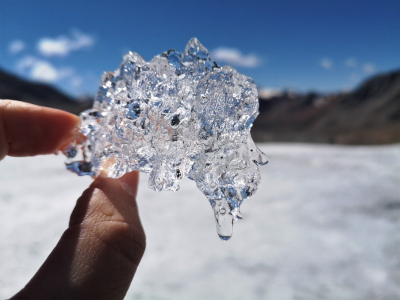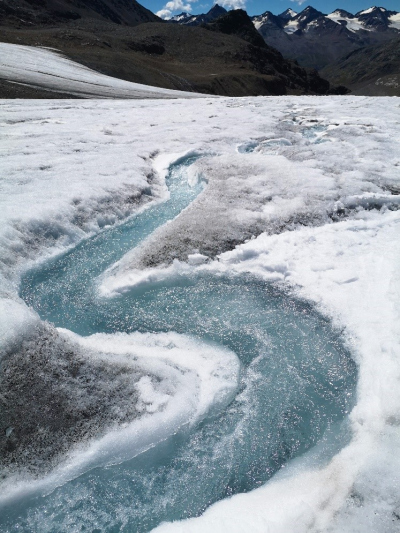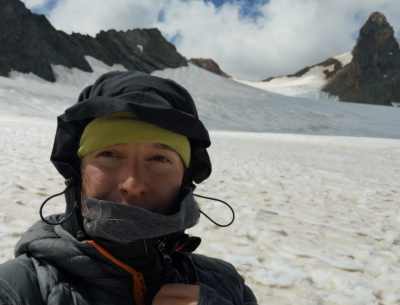- Graduate School GLOMAR
- PhD student reports
- Other activities
- Nina-Marie Lešić
Nina-Marie Lešić
Report of GLOMAR PhD student Nina-Marie Lešić about her participation in a glaciology excursion to Vernagtferner organised by POLMAR (Helmholtz Graduate School for Polar and Marine Research) and Prof. Dr. Olaf Eisen from the Alfred Wegener Institute, Bremerhaven from 6 to 13 July 2022
The annual glaciological field trip to Vernagtferner (Austria) was again organised by Prof. Olaf Eisen and POLMAR to train 21 international PhD Students, Geosciences Students and Environmental Physics (PEP) students from different Universities and institutions in glaciological methods and teach them about the changing alpine glaciers, in particular Vernagtferner. The goal was to obtain a comparable dataset to the previous years based on radar measurements, Laser Scanner data, drone footage and snow column information from snow pits, which will be processed in a subsequent course. Unfortunately, we were not able to perform gravimetric measurements this year.
Together with fellow participants from Bremen, I travelled to Vent (Austria) by train and bus. Carrying our personal equipment, we hiked to the “Vernagt” hut, which is located at 2766 m asl below the Vernagtferner. This hut functioned as base for our 4 days-long excursion on the glacier.
On the same day, gear was distributed among the participants and carried along a large lateral moraine to a depot just below the glacier. During the following days, we first hiked to the depot, re-distributed the gear and split into groups of 3-4 people to carry out different measurements. Group 1, which I belonged to, firstly re-mounted the Laser Scanner at its usual position next to the glacier’s ablation zone and acquired a reflection scan of the glacier, which was done twice a day. Subsequently, we learned how a drone is to be operated autonomously to acquire footage along a programmed grid above the glacier. Afterwards, we hiked up the glacier to reach the accumulation zone and find the other groups. On our way, we measured ablation stakes, which are arrays of 2m-long wooden poles, interconnected with metal springs and drilled 10 m into the ice. Each year, their length above the ice is measured to quantify ablation. In the afternoon, we hiked to a ridge as a six-rope party to see the neighbouring glaciers. On following days, we took turns with the other groups and dug a snow pit to investigate the snow column and its density above the glacier ice. The individual snow pits were distributed evenly over the plateau with a spacing of 50 m. To be able to interpret the area between the pits, we used a radar sledge to obtain information on the snow thickness and ice internal features, like crevasses, below the snow-ice boundary. Additionally, we were introduced to steam drilling in order to install two new ablation stakes on the glacier and to the function of the Vernagtbach gauging and weather stations. There, scientists record the glacier runoff, as well as the air temperature, air pressure, wind speed, precipitation and radiation a few kilometres downstream of the glacier tongue.
To me, this excursion, alongside of educating me on glaciological principles and providing knowledge on sediment entrainment and transport, emphasised how far alpine glaciers have retreated over the past decades and especially last couple of years. It was both interesting and sad to see the unusually small amount of snow, the exposed ice and its melting – two months before the melt season will eventually end.
I want to thank my supervisors Prof. Dr. Gerhard Bohrmann and Dr. Gerhard Kuhn for the possibility to participate in the course and to Prof. Dr. Olaf Eisen for the organisation. Further, I want to thank GLOMAR for providing the funds for this unique scientific experience.





